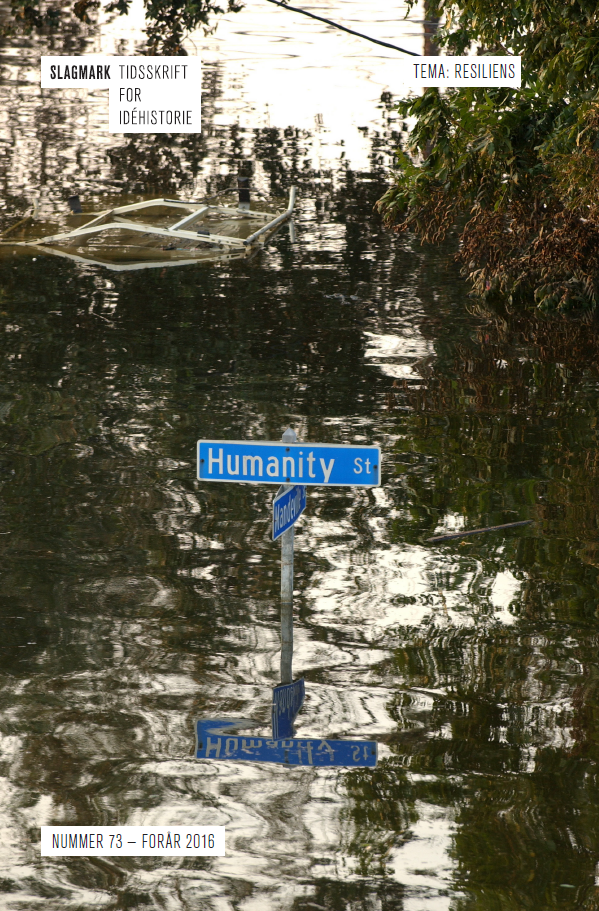Resiliens i et globalt klimaperspektiv
DOI:
https://doi.org/10.7146/sl.v0i73.107229Keywords:
resilience, climate change, adaptation, development, Global SouthAbstract
Resilience has become a key concept in the global climate change discourse, not least in relation to climate change adaptation in the Global South. Taking Bangladesh as an example, this paper explores the role and function of resilience in one of the most climate vulnerable nations. The aim is to examine and critically discuss the popularity of resilience in recent climate change policy. The paper looks into the following aspects of climate change resilience: (i) the relation between resilience and the concepts of mitigation/adaptation; (ii) resilience as a re-description of existing socio-ecological means of adaptation; (iii) resilience as an example of the integration of climate change adaptation and development; (iv) resilience as a strategic resource in obtaining international climate change funding. The four aspects illustrate how the discourse of resilience is surrounded by rather diverse mechanisms and dynamics, which may account for the concepts popularity. It further indicates that while the concept promises a pro-poor and context sensitive approach to climate change resilience, it also risks effacing the principal differences between development and climate change adaptation.
References
Crutzen, P. J., & Stoermer, E. F. (2012). The “Anthropocene”. Global Change Newsletter, Volume (41), 17–18.
Darian, S. G. (2001). Ganges in Myth and History. Delhi: Motilal Banarsidass Publ.
Drengson, A. R., & Inoue, Y. (Red.). (1995). The deep ecology movement: an introductory anthology. Berkeley, Ca.: North Atlantic Books.
Dryzek, J. S. (2005). The Politics of the Earth. Environmental Discourses. Oxford: Oxford University Press.
Eskjær, M. F., & Sørensen, M. (2014). Introduktion. Humanistisk Klimaforskning. i M. Sørensen & M. F. Eskjær (Red.), Kilma og mennesker. Humanistiske perspektiver på klimaforandringer (s. 11–26). København: Museum Tusculanum.
Fishcer, D. R., & Freudenburg, W. R. (2001). Ecological Modernization and Its Critics: Assessing the Past and Looking Toward the Future. Society and Natural Resources, 14, 701–709.
Folke, C. (2006). Resilience: The emergence of a perspective for social–ecological systems analyses. Global Environmental Change, 16 (3), 253–267. http://doi.org/10.1016/j.gloenvcha.2006.04.002
Faaland, J., & Parkinson, J. R. (1976). Bangladesh: Gradual Development or Deepening Misery? World Development, 4(9), 739–747.
GCF. (2015, november 6). DECISION B.11/11 Agenda item 11: Consideration of funding proposals. Green Climate Fund. Hentet fra www.greenclimate.fund/documents/20182/76153/DECISION_B.11_11_-_Consideration_of_funding_proposals.pdf/92c5d2f0-520e-4f74-a2e5-badb7ea54a68?version=1.0
GED. (2013). The Millennium Development Goals Bangladesh Progress Report 2012 (s. 160). Dhaka: General Economics Division (GED) Bangladesh Planning Commission Government of the People’s Republic of Bangladesh.
Huq, S. (2014a). Changing the narrative on Bangladesh and climate change. The Daily Star. Dhaka. Hentet fra www.thedailystar.net/changing-the-narrative-on-bangladesh-and-climate-change-31792
Huq, S. (2014b). Tackling climate change effectively. The Daily Star. Dhaka. Hentet fra www.thedailystar.net/tackling-climate-change-effectively-11070
Inman, M. (2009). Where warming hits hard. Nature Reports Climate Change, (0902), 18–21. http://doi.org/10.1038/climate.2009.3
IPCC. (2012). Managing the risks of extreme events and disasters to advance climate change adaption: special report of the Intergovernmental Panel on Climate Change. (C. B. Field, Red.). New York, NY: Cambridge University Press.
Janssen, M. A., Schoon, M. L., Ke, W., & Börner, K. (2006). Scholarly networks on resilience, vulnerability and adaptation within the human dimensions of global environmental change. Global Environmental Change, 16(3), 240–252. http://doi.org/10.1016/j.gloenvcha.2006.04.001
Joerin, J., Shaw, R., Takeuchi, Y., & Krishnamurthy, R. (2012). Assessing community resilience to climate-related disasters in Chennai, India. International Journal of Disaster Risk Reduction, 1, 44–54. http://doi.org/10.1016/j.ijdrr.2012.05.006
Lewis, D. (2011). Bangladesh. Politics, Economy and Civil Society. Cambridge: Cambridge University Press.
Maplecroft. (2014). Climate Change and Environmental Risk Atlas 2015. Maplecroft. Hentet fra http://maplecroft.com/portfolio/new-analysis/2014/10/29/climate-change-and-lack-food-security-multiply-risks-conflict-and-civil-unrest-32-countries-maplecroft/
MoEF. (2009). Bangladesh Climate Change Strategy and Action Plan 2009 (s. xviii + 76pp.). Ministry of Environment and Forests, Government of Bangladesh.
Nelson, D. R. (2011). Adaptation and resilience: responding to a changing climate. Wiley Interdisciplinary Reviews: Climate Change, 2(1), 113–120. http://.doi.org/10.1002/wcc.91
Nelson, D. R., Adger, W. N., & Brown, K. (2007). Adaptation to Environmental Change: Contributions of a Resilience Framework. Annual Review of Environment and Resources, 32(1), 395–419. http://.doi.org/10.1146/annurev.energy.32.051807.090348
OECD. (2005). Bridge over troubled waters: linking climate change and development. (S. Agrawala & A. U. Ahmed, Red.). Paris: Organisation for Economic Co-operation and Development.
Pervin, M. (2013). Mainstreaming climate change resilience into development planning in Bangladesh (s. 12). Dhaka: iied; UNEP; UNDP.
Rahman, A. A. (2016). Inclusive growth and climate resilient development. The Daily Star, april 2, s. 4, 9. Dhaka.
Raihan, M. S., Huq, M. J., Alsted, N. G., & Andreasen, M. H. (2010). Understanding climate change from below, addressing barriers from above: Practical experience and learning from a community-based adaption project in Bangladesh (s. 98). Dhaka: ActionAid Bangladesh.
Schendel, W. van. (2009). A History of Bangladesh. Cambridge: Cambridge University Press.
Shamsuddoha, M. (2015). Climate-Induced Displacemanet and Migration: Policy Gaps and Policy Alternative (s. 12). Dhaka: CPRD.
UNDP. (2014). Resilient Bangladesh. UNDP Bangladesh Annual Report 2013/2014 (s. 68). Dhaka: UNDP Bangladesh.
UNEP. (2014). Bangladesh Uncovers the Crippling Cost of Climate Change Adaptation. UNEP news center. Hentet fra www.unep.org/newscentre/default.aspx?DocumentID=2788&ArticleID=10864&l=en
UNFCCC. (2015). Adoption of the Paris Agreement. UNFCCC.
UN MDG. (u.å.). Millennium Development Goals. Hentet fra www.un.org/millenniumgoals/
UN Sustainable Development. (2015). Sustainable development goals. Hentet fra https://sustainabledevelopment.un.org/topics/sustainabledevelopmentgoals
Urry, J. (2011). Climate Change & Society. Cambridge: Polity.
Walker, J., & Cooper, M. (2011). Genealogies of resilience: From systems ecology to the political economy of crisis adaptation. Security Dialogue, 42(2), 143–160. www.doi.org/10.1177/0967010611399616
World Bank. (2010). World Development Report 2010. Development and Climate Change. Washington DC: World Bank.
World Bank. (2013). Building Resilience. Integrating Climate and Disaster Risk into Development (s. 44). Washington DC: The World Bank.
Zolli, A. (2012, november 2). Learning to Bounce Back. New York Times. N.Y. Hentet fra www.nytimes.com/2012/11/03/opinion/forget-sustainability-its-about-resilience.html?_r=0





